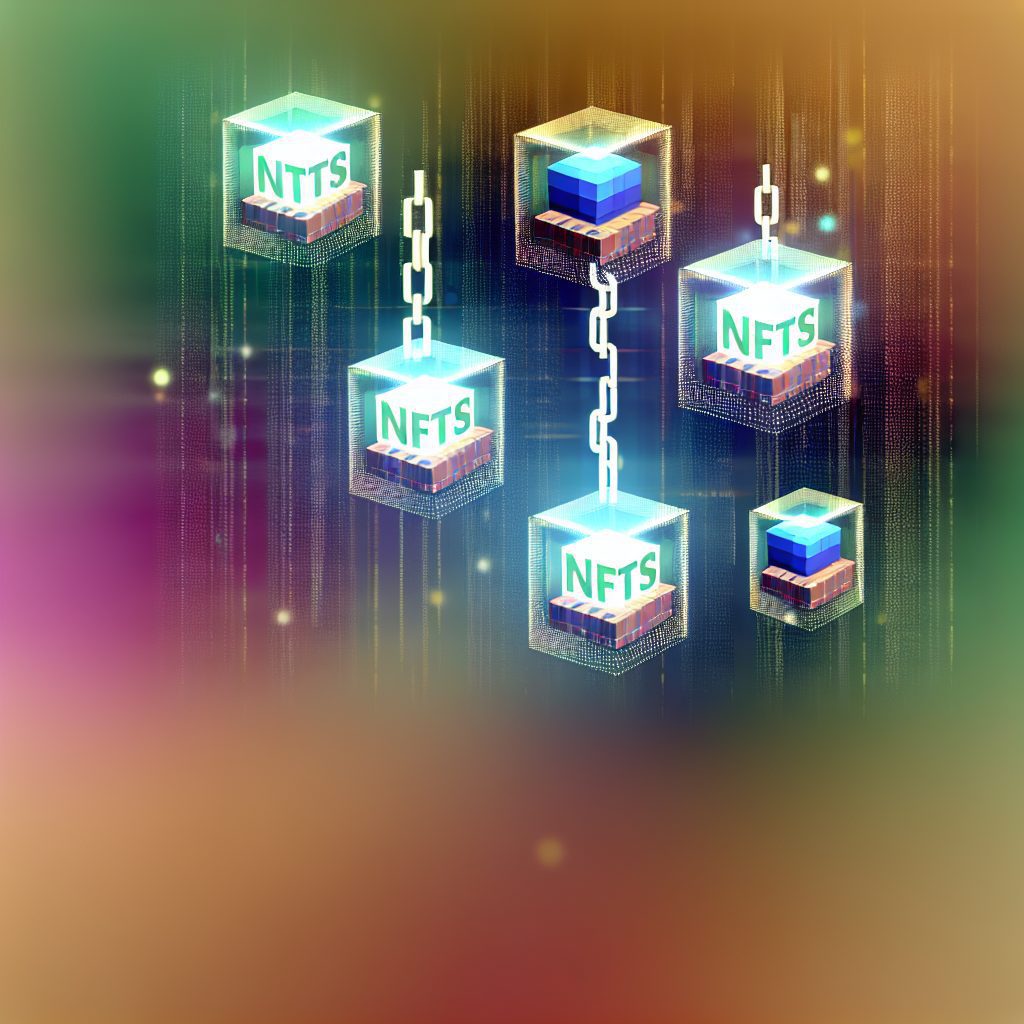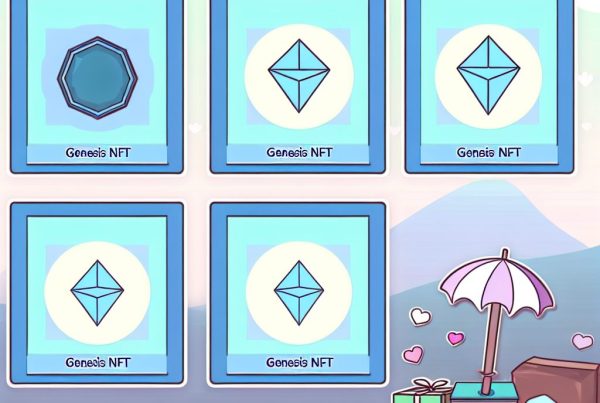How Are NFTs Stored On-Chain?
Non-fungible tokens (NFTs) have revolutionized the way we perceive ownership and value in the digital realm. Unlike cryptocurrencies such as Bitcoin or Ethereum, which are fungible and can be exchanged for one another, NFTs represent unique assets that cannot be replicated. This uniqueness is what makes NFTs particularly appealing to artists, collectors, and investors alike. However, a critical question arises: how are NFTs stored on-chain? Understanding the mechanics of on-chain storage is essential for anyone looking to navigate the NFT landscape effectively.
Understanding NFTs and Blockchain Technology
Before delving into the specifics of on-chain storage, it’s crucial to grasp the fundamentals of NFTs and the blockchain technology that underpins them. NFTs are digital certificates of ownership that are recorded on a blockchain, a decentralized and immutable ledger. This ledger ensures that the ownership and transaction history of each NFT are transparent and verifiable.
Most NFTs are built on the Ethereum blockchain, utilizing standards such as ERC-721 and ERC-1155. These standards define how NFTs are created, transferred, and managed on the blockchain. However, other blockchains like Binance Smart Chain, Flow, and Tezos also support NFTs, each with its unique features and advantages.
On-Chain vs. Off-Chain Storage
When discussing how NFTs are stored, it’s essential to differentiate between on-chain and off-chain storage. On-chain storage refers to data that is stored directly on the blockchain, while off-chain storage involves keeping data outside the blockchain, often on centralized servers or decentralized storage solutions.
On-chain storage has several advantages:
- Immutability: Data stored on the blockchain cannot be altered or deleted, ensuring the integrity of ownership records.
- Transparency: All transactions are publicly accessible, allowing anyone to verify ownership and transaction history.
- Decentralization: On-chain storage eliminates reliance on a single entity, reducing the risk of data loss or manipulation.
However, on-chain storage also has its limitations:

- Cost: Storing large amounts of data on-chain can be expensive due to transaction fees.
- Scalability: Blockchains have limited capacity, which can lead to congestion and slower transaction times.
- Data Size Limitations: Most blockchains have restrictions on the amount of data that can be stored in a single transaction.
How NFTs Are Stored On-Chain
When an NFT is created, its metadata and ownership information are recorded on the blockchain. This process typically involves several key components:
1. Metadata
The metadata of an NFT includes essential information such as:
- Title: The name of the NFT.
- Description: A brief overview of the asset.
- Creator: The wallet address of the NFT’s creator.
- Ownership: The wallet address of the current owner.
- Image or Asset Link: A URL pointing to the digital asset (e.g., artwork, music file).
This metadata is often stored directly on-chain in a compact format, but due to size limitations, many NFTs link to off-chain storage solutions for larger files.
2. Smart Contracts
Smart contracts are self-executing contracts with the terms of the agreement directly written into code. When an NFT is minted, a smart contract is deployed on the blockchain, which governs the NFT’s behavior and attributes. This contract includes:
- Minting Function: The process of creating a new NFT.
- Transfer Function: Rules for transferring ownership between wallets.
- Royalty Mechanism: Conditions for paying royalties to creators on secondary sales.
Smart contracts ensure that all transactions involving the NFT adhere to predefined rules, enhancing security and trust.
3. Token Standards
As mentioned earlier, NFTs are typically built using specific token standards like ERC-721 or ERC-1155. These standards define how NFTs are structured and interact with the blockchain. For example:
- ERC-721: This standard allows for the creation of unique tokens, each with distinct properties.
- ERC-1155: This standard enables the creation of both fungible and non-fungible tokens within a single contract, improving efficiency.
By adhering to these standards, NFTs can be easily recognized and traded across various platforms and marketplaces.
Challenges of On-Chain Storage
While on-chain storage offers numerous benefits, it also presents challenges that developers and users must navigate:
1. Data Permanence
Once data is stored on the blockchain, it is permanent. This immutability can be a double-edged sword. If incorrect information is recorded, it cannot be changed. This highlights the importance of thorough verification before minting an NFT.
2. Cost Implications
Storing data on-chain can incur significant costs, especially during periods of high network congestion. Users must weigh the benefits of on-chain storage against the potential financial implications.
3. Limited Data Capacity
Blockchains have limitations on the amount of data that can be stored in a single transaction. This constraint often necessitates the use of off-chain solutions for larger files, which can complicate the ownership verification process.
Off-Chain Storage Solutions
Given the challenges associated with on-chain storage, many NFT creators opt for off-chain solutions to store larger files. These solutions include:
1. IPFS (InterPlanetary File System)
IPFS is a decentralized storage network that allows users to store and share files in a peer-to-peer manner. When an NFT is created, the digital asset can be uploaded to IPFS, and a unique content identifier (CID) is generated. This CID is then stored on the blockchain as part of the NFT’s metadata.
2. Arweave
Arweave is another decentralized storage solution that focuses on permanent data storage. It uses a unique blockchain-like structure to ensure that data remains accessible indefinitely. Like IPFS, Arweave allows NFT creators to store their digital assets off-chain while maintaining a link to the blockchain.
3. Centralized Storage Solutions
Some creators may choose to use centralized storage solutions like Amazon S3 or Google Cloud. While these options can be more cost-effective and easier to manage, they introduce risks related to data ownership and accessibility. If the centralized service goes down or changes its policies, the NFT’s associated asset may become inaccessible.
Real-World Use Cases of On-Chain NFT Storage
Several projects and platforms exemplify the effective use of on-chain NFT storage:
1. CryptoPunks
CryptoPunks, one of the first NFT projects, utilizes the ERC-721 standard to store metadata directly on the Ethereum blockchain. Each punk is unique, and its ownership history is permanently recorded, making it a prime example of on-chain storage.
2. Bored Ape Yacht Club (BAYC)
BAYC is another popular NFT collection that leverages on-chain storage for its metadata. Each ape has distinct traits and characteristics, and the ownership of these NFTs is tracked on the Ethereum blockchain, ensuring transparency and security.
3. Decentraland
Decentraland is a virtual reality platform where users can buy, sell, and build on virtual land parcels. The ownership of these parcels is recorded on the Ethereum blockchain, showcasing how NFTs can represent real estate in a digital environment.
Future Trends in NFT Storage
The landscape of NFT storage is continually evolving. As the technology matures, several trends are emerging:
1. Enhanced Interoperability
As more blockchains adopt NFT standards, interoperability between different platforms will become increasingly important. This will allow users to transfer NFTs seamlessly across various ecosystems.
2. Improved Scalability Solutions
Layer 2 solutions, such as Polygon and Optimism, are being developed to address scalability issues on the Ethereum blockchain. These solutions can reduce transaction costs and improve the speed of NFT transactions, making on-chain storage more viable.
3. Decentralized Identity Solutions
Decentralized identity solutions will play a crucial role in enhancing the security and privacy of NFT ownership. By allowing users to control their identities, these solutions can help prevent fraud and ensure that ownership records are accurate.
FAQs About NFT On-Chain Storage
What is the difference between on-chain and off-chain NFT storage?
On-chain storage refers to data that is stored directly on the blockchain, ensuring immutability and transparency. Off-chain storage involves keeping data outside the blockchain, often on centralized servers or decentralized storage solutions, which can be more cost-effective but may introduce risks related to data accessibility.
Can NFTs be completely stored on-chain?
While some metadata can be stored on-chain, larger files (like images or videos) often require off-chain storage solutions due to blockchain size limitations and cost implications.
What are the benefits of using IPFS for NFT storage?
IPFS offers decentralized storage, ensuring that files remain accessible even if individual nodes go offline. It also provides a unique content identifier (CID) that can be linked to the NFT on the blockchain, maintaining a connection between the asset and its ownership record.
Are there risks associated with off-chain storage?
Yes, off-chain storage can introduce risks related to data ownership and accessibility. If a centralized service goes down or changes its policies, the NFT’s associated asset may become inaccessible.
Conclusion
Understanding how NFTs are stored on-chain is crucial for anyone involved in the cryptocurrency industry. On-chain storage offers benefits such as immutability, transparency, and decentralization, but it also presents challenges like cost and data capacity limitations. By leveraging off-chain storage solutions like IPFS and Arweave, NFT creators can effectively manage larger files while maintaining a connection to the blockchain.
As the NFT landscape continues to evolve, staying informed about storage solutions and best practices will be essential for artists, collectors, and investors alike. For the latest news and updates in the crypto world, consider visiting Bitrabo. Follow me on X, Instagram, and Threads for more insights into the cryptocurrency industry.
Disclaimer: This article is for informational purposes only and should not be considered financial advice. Always conduct your own research before making investment decisions.
The Crypto Watchlist of the Week 🔎
Subscribe to receive expert-curated projects with real potential—plus trends, risks, and insights that matter. Get handpicked crypto projects, deep analysis & market updates delivered to you.


